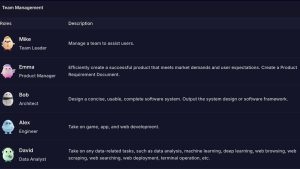
In today’s data-driven business landscape, financial information is no longer just about bookkeeping—it’s a strategic asset. Every transaction, expense, and revenue stream carries insights that can shape the future direction of a company. By learning how to interpret and apply financial data effectively, leaders can uncover opportunities, manage risks, and make informed strategic business decisions that fuel sustainable growth.
Transforming financial data into an actionable strategy requires a shift in mindset—from seeing numbers as static records to viewing them as dynamic tools for decision-making. This approach empowers organizations to understand not only where they stand financially but also where they can go next.
Leveraging Financial Data to Guide Investment Strategies
When it comes to expanding a business, one of the most important questions is where and how to allocate resources. Financial data holds the key to answering this. By analyzing cash flows, return on investment, and asset performance, decision-makers can pinpoint which ventures are worth pursuing and which should be avoided.
For example, predictive analysis of financial statements can highlight underperforming areas and suggest potential opportunities for reinvestment. Using tools such as an investment growth calculator can help estimate future returns and evaluate whether an investment aligns with long-term objectives. The key is to blend quantitative data with qualitative insights—understanding not just what the numbers show, but why they show it.
Through consistent monitoring and evaluation, businesses can align their investment strategies with measurable financial outcomes. This ensures that each investment supports broader strategic goals rather than short-term gains.
Using Data Analysis to Identify Trends and Opportunities
Every financial report tells a story about a company’s operations, consumer behavior, and market conditions. By examining patterns over time, leaders can uncover insights that aren’t immediately visible. For instance, analyzing revenue trends may reveal cyclical patterns in sales, while studying expense reports could identify areas where costs can be reduced without sacrificing quality.
Trend analysis can also uncover growth opportunities. If a business notices consistent revenue increases in a specific product line, it may signal a chance to expand production or explore related markets. On the other hand, if a trend shows declining performance in a particular area, decision-makers can act early to mitigate losses.
The goal is to transform raw data into foresight. By using data analytics tools to forecast potential scenarios, businesses gain the ability to make proactive, not reactive, strategic decisions.
Aligning Financial Insights with Business Objectives
Financial data becomes powerful when it aligns directly with a company’s strategic objectives. This requires a clear understanding of organizational goals—whether they focus on profitability, expansion, innovation, or operational efficiency. Once those goals are defined, key performance indicators (KPIs) should be developed to track progress using financial metrics such as profit margins, cash flow ratios, and cost efficiencies.
For instance, if a company’s objective is to improve operational efficiency, analyzing financial data can help identify unnecessary overhead costs or redundant processes. Similarly, if the goal is growth, assessing profitability by product line can reveal where the highest returns are generated.
Enhancing Decision-Making Through Forecasting
Forecasting transforms historical financial data into a roadmap for the future. By examining past performance, companies can project future outcomes and make informed choices regarding budgets, staffing, and resource allocation. Forecasting helps businesses prepare for both expected and unforeseen changes—such as market shifts, supply chain challenges, or variations in demand.
Accurate financial forecasting allows leaders to test multiple scenarios and evaluate potential outcomes before committing to a strategy. For example, scenario analysis can simulate how different cost structures or pricing strategies might impact profitability.
Integrating Technology into Financial Decision-Making
Modern technology has revolutionized the way organizations collect and analyze financial data. Automation and advanced analytics platforms can process large volumes of information quickly, minimizing human error and providing timely insights. Artificial intelligence and machine learning tools can detect anomalies, predict trends, and highlight areas that require attention.
With the right technology in place, businesses can transition from reactive reporting to predictive and prescriptive analytics. This means not only identifying what happened and why but also understanding what is likely to happen next and how to respond effectively.
Strengthening Risk Management Through Data Insights
Every business faces risks—market volatility, regulatory changes, or internal inefficiencies. Financial data provides an essential foundation for identifying and managing these risks. By regularly reviewing key financial indicators such as liquidity ratios and debt levels, companies can assess their risk exposure and take preventive measures.
Data-driven risk management also involves setting early warning thresholds. For instance, if cash reserves drop below a certain level or if profit margins shrink unexpectedly, alerts can be triggered to prompt immediate action. This proactive approach allows businesses to mitigate risks before they escalate into larger problems.
Building a Data-Driven Culture for Strategic Success
Turning financial data into strategic decisions is not solely about tools and reports—it’s about cultivating a culture that values data-driven thinking at every level of the organization. Leadership must encourage transparency, accuracy, and collaboration when it comes to handling financial information.
Employees should be trained to understand the significance of financial metrics and how their roles contribute to overall business outcomes. When team members see the connection between data and decision-making, they become more invested in the organization’s success.
Turning Numbers into Actionable Strategy
Ultimately, the ability to transform financial data into strategic business decisions defines the strength and longevity of an organization. It’s about connecting the dots between numbers and real-world actions. Financial statements, budgets, and forecasts are not just administrative tasks—they are strategic tools that can shape the direction of a company.
By leveraging data to identify opportunities, reduce risks, and guide investments, businesses can move beyond reactive management toward strategic growth. Financial data tells the story of where the business has been, but more importantly, it provides a clear view of where it can go next.
When leaders treat financial data as a compass rather than a record book, they gain the power to navigate their organizations toward smarter, more sustainable success.





